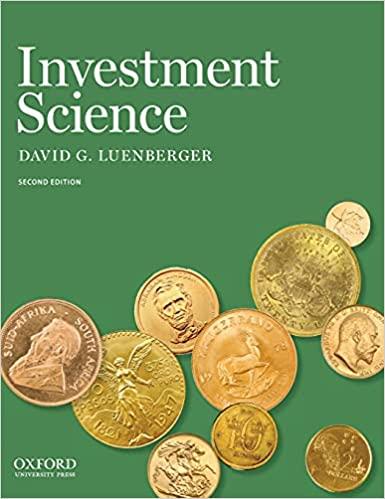A stock price is governed by [frac{mathrm{d} S}{S}=mu mathrm{d} t+sigma mathrm{d} z] where (z) is a standardized
Question:
A stock price is governed by \[\frac{\mathrm{d} S}{S}=\mu \mathrm{d} t+\sigma \mathrm{d} z\] where \(z\) is a standardized Wiener process. Interest is constant at rate \(r\). An investor wishes to construct a constantly rebalanced portfolio to these two assets that maximizes the expected value of his power utility \(U(X)=(1 / \gamma) X^{\gamma}, \gamma<1\), at all times \(t \geq 0\). Show that the proportion \(w\) of wealth invested in the risky asset is \(w=(\mu-r) /\left[(1-\gamma) \sigma^{2}\right]\). Use the following steps.
(a) Show that \[X(t)=X(0) e^{\left\{r t+w(\mu-r) t-w^{2} \sigma^{2} t / 2+w n \sigma \sqrt{t}\right\}},\] where \(n\) is a normal random variable with mean 0 and variance 1 .
(b) Use \(\mathrm{E}\left(e^{a n}\right)=e^{a^{2} / 2}\) to show that \[\mathrm{E}[U(X(t))]=\frac{1}{\gamma} e^{\gamma\left[r+w(\mu-r) t-w^{2} \sigma^{2} t / 2\right]+\gamma^{2} w^{2} \sigma^{2} t / 2} .\]
(c) Find \(w\).
Step by Step Answer:






